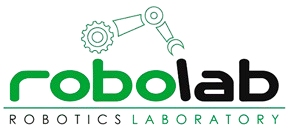Publicaciones
2024
- Rodriguez Criado, Bachiller Burgos, Calderita Estevez, Manso Argüelles | SNGNN2D-v2: A GNN-Based Model for the Generation of Human-Aware Cost Maps in Dynamic Environments


- Rodriguez-Criado, Daniel and Bachiller-Burgos, Pilar and Vogiatzis, George and Manso, Luis J. | Multi-person 3D pose estimation from unlabelled data


- Teja Singamaneni, Bachiller Burgos, Manso Argüelles, Anaís Garrell, Alberto Sanfeliu, Anne Spalanzani, Rachid Alami | A Survey on Socially Aware Robot Navigation: Taxonomy and Future Challenges


- Trinidad Barnech, Gonzalo Tejera, Valle-Lisboa, Núñez Trujillo, Bachiller Burgos, Bustos García | Enhancing Robotic Perception through Synchronized Simulation and Physical Common-Sense Reasoning


- Zapata, Noé and Pérez, Gerardo and Bonilla, Lucas and Núñez, Pedro and Bachiller, Pilar and Bustos, Pablo | Guessing Human Intentions to Avoid Dangerous Situations in Caregiving Robots


2023
- Adyta Kapoor, Sushant Swamy, Pilar Bachiller, Luis J Manso | SocNavGym: A Reinforcement Learning Gym for Social Navigation


- Pablo Bustos, Pilar Bachiller, Ismael García, Jesús Martínez, Antonio Bandera, Rebeca Marfil | INSIGHT: The quest for causal explanations


- Trinidad Barnech, Gonzalo Tejera, Valle Lisboa, Núñez Trujillo, Bachiller Burgos, Bustos García | Initial Results with a Simulation Capable Robotics Cognitive Architecture


2022
- Bachiller Burgos, Rodriguez-Criado, Jorvekar, Faria | A graph neural network to model disruption in human-aware robot navigation


- Garcia Garcia, Núñez Trujillo, Bachiller Burgos, Bustos Garcia | Towards the design of efficient and versatile cognitive robotic architecture based on distributed low-latency working memory


- Pérez González, Rodríguez Domínguez, Bachiller Burgos, Bustos García, Núñez Trujillo | Introducing the Social Robot EBO: An Interactive and Socially Aware Storyteller Robot for Therapies with Older Adults


2020
2018
- Bachiller Burgos, Manso Arguelles, Bustos Garcia | A Spiking Neural Model of HT3D for Corner Detection


- Manso Arguelles, Gutierrez, Bustos Garcia, Bachiller Burgos | Integrating planning perception and action for informed object search


- Núñez Trujillo, Bustos Garcia, Martinena Guerrero, Bachiller Burgos | roboAGE aplicacion TIC para promover el envejecimiento activo y saludable a traves de serious games


2017
- Bachiller Burgos, Manso Arguelles, Bustos Garcia | A variant of the Hough Transform for the combined detection of corners segments and polylines


- Bustos Garcia, Manso Arguelles, Bachiller Burgos, Núñez Trujillo | Navigation among people with Cortex


- Manso Arguelles, Gutierrez Giraldo, Bustos Garcia, Bachiller Burgos | Integrating planning perception and action for informed object search


2015
2012
- Manso Arguelles, Bustos Garcia, Bachiller Burgos, Franco Campos | Indoor scene perception for object detection and manipulation


- Manso Arguelles, Bustos Garcia, Bachiller, Gutierrez | Graph Grammars for Active Perception


- Yuste-marco, Bustos Garcia, Manso Arguelles, Bachiller Burgos | Interactive games with robotic and augmented reality technology in cognitive and motor rehabilitation


2011
- Bachiller Burgos, Bustos Garcia, Manso Arguelles | Attentional Behaviors for Environment Modeling by a Mobile Robot


- Bustos Garcia, Calderita Estevez, Cintas Pena, Bachiller Burgos | Design of a Social Robot as assistant to training children with motor impairments


- Bustos Garcia, Jaramillo, Núñez Trujillo, Bachiller Burgos | Robots Sociales para la Mejora de la Calidad de Vida de las Personas Dependientes


- Calderita Estevez, Bachiller Burgos, Bandera, Bustos Garcia | MIMIC A Human motion imitation component for RoboComp


- Cintas Pena, Manso Arguelles, Pinero, Bachiller Burgos | Robust behavior and perception using hierarchical state machines A pallet manipulation experiment


- Gutierrez Giraldo, Bachiller Burgos, Manso Arguelles, Bustos Garcia | An incremental hybrid approach to indoor modeling


2010
- Manso Arguelles, Bachiller Burgos, Bustos Garcia, Nunez Trujillo | RoboComp a Tool-based Robotics Framework


- Manso Arguelles, Bustos Garcia, Bachiller Burgos | Multi-cue visual obstacle detection for mobile robots


- Mateos Sanchez, Sanchez Dominguez, Manso Arguelles, Bachiller Burgos | RobEx an open-hardware robotics platform


- Pinero, Cintas Pena, Manso Arguelles, Bachiller Burgos | Visually-guided Object Manipulation by a Mobile Robot


2009
2008
2005
2003
2002
2001
- Bustos Garcia, Bachiller Burgos, Vicente, Broncano | Murphy hacia un robot con vision estereoscopica


- Bustos Garcia, Vicente, Bachiller Burgos, Broncano | Reconstruccion 3D en tiempo real para un robot movil


- Vicente, Bustos Garcia, Bachiller Burgos | Extended visual sequence metric reconstruction from uncalibrated cameras


2000
1999

Pilar Bachiller Burgos
Profesora Titular
